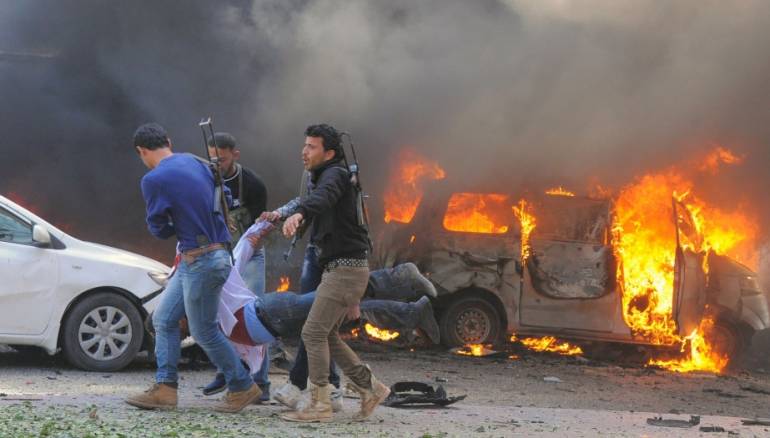A car bomb rocked the border town of Ras al-Ayn in northeastern Syria, the Turkish National Defense Ministry said Wednesday, accusing the Kurdish YPG militias of carrying out the attack.
The ministry said on Twitter. “The enemy of humanity #PKK/#YPG terrorists continue to carry out car bomb attacks against civilians, this time detonating a car bomb in central Ras al-Ayn and injuring a large number of innocent civilians with children among them,”
Car bombs have become the new attack tactic used by the Kurdish militias to target Turkish-backed fighters, but this deadly tactic has claimed the lives of tens of people this week as blasts hit marketplaces and bus terminals in the towns of Azaz, al-Bab, Jarablus and Tel Abyad.
Last week, a YPG car bomb killed 17 people and wounded 20 others in Tel Khalaf village near the border town of Ras al-Ayn, the Turkish Defence Ministry said Tuesday.
On Oct. 9, 2019, Turkey launched Operation Peace Spring to eliminate terrorists from northern Syria, east of the Euphrates River, secure Turkey’s borders, aid in the safe return of Syrian refugees, and ensure Syria’s territorial integrity.
The US-backed Syrian Democratic Forces (SDF), a group dominated by the YPG, has been controlling some 28 percent of the Syrian territories, including most of the 911-kilometer-long Syria-Turkey border.
Turkey’s military took control of the Kurdish-held border areas in northern Syria immediately after the withdrawal of US forces. Turkey has a longstanding enmity with the Kurds and wants to push back the YPG from its border.
In October, tens of thousands of people fled their homes in the border towns in northern Syria, including Tel Abyad and Ras al-Ayn, as Turkish forces pushed into the area.
Turkey claims the YPG is a “terrorist” offshoot of the outlawed Kurdistan Workers’ Party (PKK), which has fought an insurgency against the Turkish state since 1984.
This article was edited by The Syrian Observer. The Syrian Observer has not verified the content of this story. Responsibility for the information and views set out in this article lies entirely with the author.


